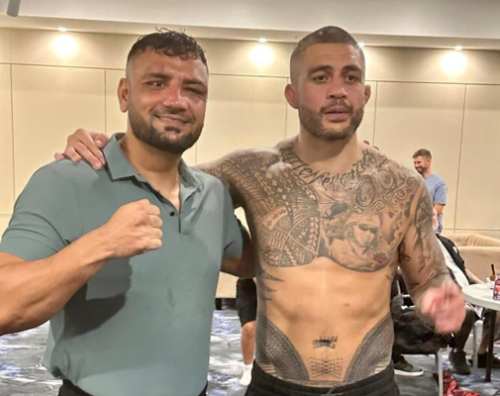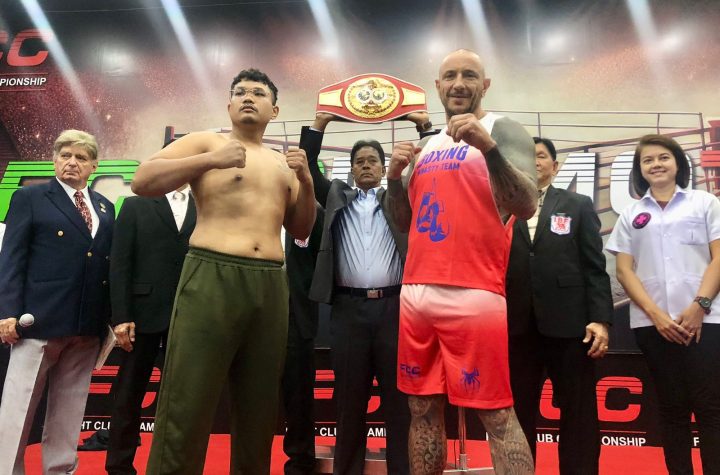
There is a theory about drawing power that sometimes applies and clearly other times doesn’t.
In 2008, when Oscar de la Hoya, who had been the boxing’s biggest drawing card for several years, lost to Manny Pacquiao, and it was clear his career was coming to an end, it was brought up at the press conference that this was bad for boxing.
Bob Arum blew it off, saying that the de la Hoya fans would now become Pacquiao fans, and that’s how it works.
It’s really not that simple, although Arum wasn’t wrong in that instance. Pacquiao’s drawing power exploded from the win over de la Hoya, with him regularly tripling the kind of numbers he did previously. The last decade of boxing on pay-per-view in the U.S. was carried by Pacquiao and Floyd Mayweather Jr., who both become much bigger drawing cards after they had beaten de la Hoya, the previous king.
The flip side to this equation is Amanda Nunes, the UFC’s women’s bantamweight champion, a division since its 2013 inception, had turned into one of the company’s biggest money divisions.
Nunes won the title from Miesha Tate at UFC 200. The fight was billed as the main event, and the show did more than 1 million buys. Now, granted, this was one of those shows where the main event wasn’t truly the biggest drawing fight on the show. The real draws were the return of Brock Lesnar and a Daniel Cormier vs. Anderson Silva fight. But it was still a lot of eyeballs paying to see what turned out to be a killer performance by Nunes.
Nunes next beat Ronda Rousey on Dec. 30 in Las Vegas in just 48 seconds, a rare Friday night show, that still did 1.1 million buys. Granted, Rousey was the draw in that fight, but one would be hard pressed to have two more impressive wins over the two stars who put the division on the map, both in main events on monster pay-per-view shows.
If Arum’s logic was correct, those wins should have made Nunes a huge star.
Unfortunately, the public didn’t react the same way for Nunes as they did for the conquerors of de la Hoya.
Nunes’ first title defense on Sept. 9, in Edmonton, Alberta, against Valentina Shevchenko, looks to have done an estimated 100,000 buys, which would be among the lowest for any UFC pay-per-view since the company got on television in 2005.
Even with the push in promotion that this would be the highest-class women’s title match in history, for a championship that had been in the spotlight since its start, and a fight that going in where it was thought that either women could win, the public interest was low.
Athletically, Nunes couldn’t have done more. The reality that the casual fan won’t support fighters like Nunes and Demetrious Johnson has to be frustrating for fans of UFC as a major sport, since as a business, if you don’t cater to the fans, the audience interest decreases greatly. And it’s clear that the goals of sport, to determine who is the best in competition, is not what interests the masses.
The plight of Nunes as champion continues the trend that UFC on pay-per-view is a business of the have’s and the have-nots. It’s not about championships. It’s not about the perception of close fights where the outcome is in jeopardy. It’s not even about fights that look exciting on paper, as Tony Ferguson vs. Kevin Lee’s fight at UFC 216 looked on paper like as guaranteed an exciting main event as you could have, and early indications are that it wasn’t a big hit either. It’s not about excitement, as UFC shows over the past 18 months have had far more hits than misses when it comes to action, and quality fights up-and-down the show.
It’s more and more about certain names, and in 2017, the only proven names are Conor McGregor and Jon Jones, and the latter is on a provisional suspension. Ultimately, it’s the names of the few big stars, who make the difference between the company’s best pay-per-view year in history in 2016, and this year, where only one fight, Jones vs. Daniel Cormier, has hit big.
This also makes UFC 217, on Nov. 4 in Madison Square Garden, so important on many levels. Georges St-Pierre, who challenges Michael Bisping for the middleweight title, was one of the biggest draws in company history. He wasn’t in the McGregor or Rousey category, but was a level just below them. He was the UFC’s top pay-per-view draw when he left the sport in 2013, and could be counted to deliver 600,000 to 1 million buys every time out.
It’s uncharted waters what St-Pierre fighting will mean in 2017. He nearly single-handedly carried Canada into being an MMA monster on pay-per-view for years. But there has been a huge turnover of audience since then. The new audience that Rousey and McGregor brought in has no emotional connection to St-Pierre. Whether he can bring his old audience back is the question.
On paper, there is a story. The returning star challenges for a championship in a division higher than the one he formerly competed in against a big-mouth opponent who will talk up the fight.
If St-Pierre loses, he’s said he will retire. If he wins, he could be one of the desperately needed have’s, and perhaps bring the UFC interest level in Canada back near previous levels.

/cdn.vox-cdn.com/uploads/chorus_image/image/57161611/116_Amanda_Nunes_vs_Valentina_Shevchenko.0.jpg)




More News
UFC269: Venezuelan Julianna Peña Submits Brazilian Amanda Nunes, Becomes the new UFC World Champion
Oliveira, Poitier Make Weight for UFC World Title
Hot UFC269: this Saturday Oliveira vs Poirier Ready for War in Las Vegas